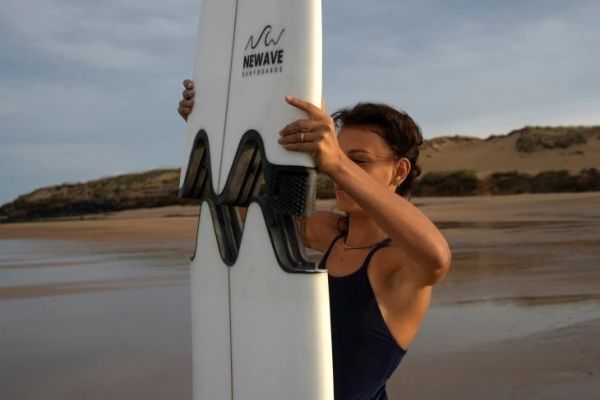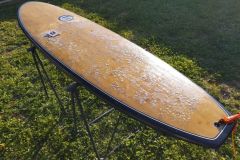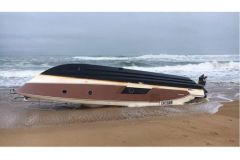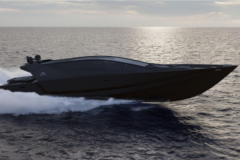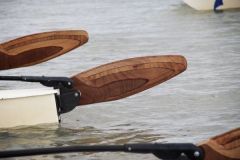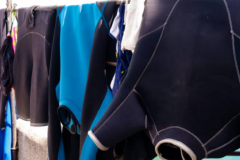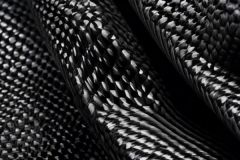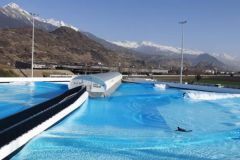Imagine traveling by train with your surfboard in a backpack, escaping the costs of air travel, and surfing wherever you want without the hassle of unsuitable transport. That's the vision of Newave Surboards, a start-up offering dismountable boards. From prototypes to solving sustainability challenges, Ewen Mahevas, co-founder of Newave Surfboards, talks us through the concept.
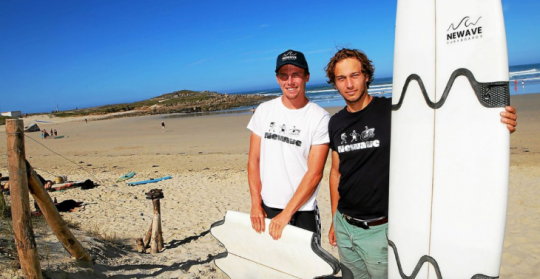
Could you share with us the concept behind the creation of Newave?
The first point of departure for my thinking took place in the summer of 2019. I was leaving for a week's surfing in the Landes region, and received two fines on the TGV for traveling with my board: one on the outward journey and the other on the return! Pissed off, I remember thinking at the time that a board that could be carried on the train might be of real interest.
The second trigger came during my Erasmus in Lisbon. At the time, owning several short boards, I would have appreciated a longer board for small waves. However, as it didn't fit in my car, it was difficult to transport it, as well as to store it in my apartment.
That's how I started designing a dismountable surfboard that could be carried in a backpack.
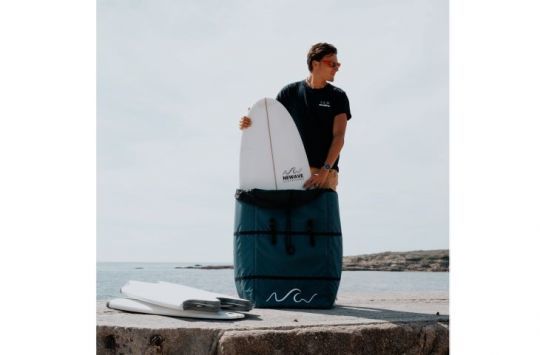
The entrepreneurial curriculum at ENSTA Paris then enabled me to bring the project to life. Today, our team consists of four members: Hadrien Nauroy, co-founder and engineer of Newave, Constance Boudard, graphic designer, Jonathan Serin, sales representative, and myself. We also work closely with a research team at ENSTA Paris.
Can you tell us more about the design of the removable boards? How did you address the durability and structural strength concerns associated with the modularity of these boards and the rigors of surfing?
To optimize the structural strength of the joint between the pieces of planking, we addressed two aspects:
-
We designed more than fifteen different versions of the parts, which we loaded on a test bench until they broke. The first stages involved small-scale 3D printing at our engineering school, followed by an initial prototype of reduced size (30%), and then five versions of full-scale prototypes.
-
We also worked on modeling the transmission of forces by carrying out 3D simulations. This enabled us to optimize part geometry by reducing stress concentration zones.
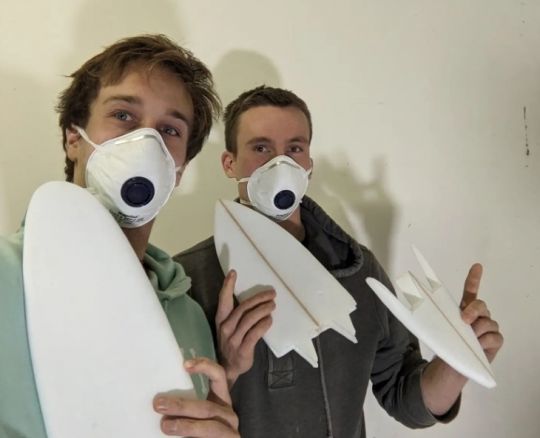
To assess the sustainability of our products:
-
We put our prototypes through their paces over the summer. The results are very positive, validating the geometry of the locking system. At present, we're concentrating on certain details, such as reducing the board's weight and improving the ergonomics of the locking system.
-
We also carried out extensive fatigue tests on a test bench. Using a motor connected to a belt and eccentric, we subjected the board to over 3,000 bending cycles, validating the system's durability.
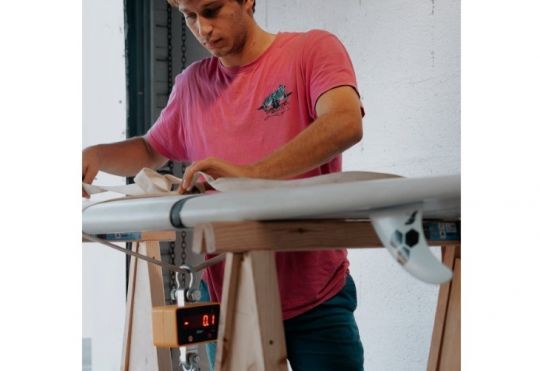
We continue to improve the quality of our product every day. We are currently revising the locking mechanism to simplify its use, exploring new materials and working on an innovative manufacturing process. Each step is subjected to a battery of strength and durability tests before being integrated into the board. Our engineering background means that we apply great rigor to these aspects.
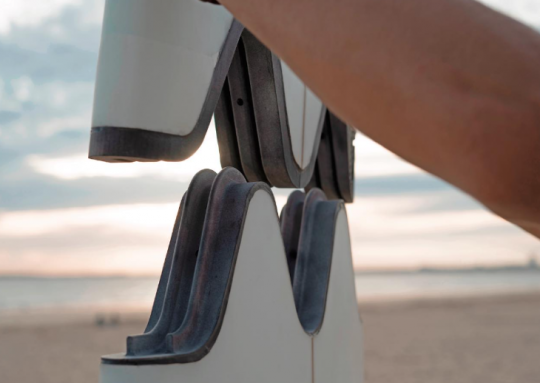
In addition to convenient transport, how is Newave committed to environmentally-friendly practices in the manufacture of its surfboards?
To optimize our emissions, we have assembled a team of engineering students from ENSTA Paris. Over a period of almost a year and more than 120 hours of work, they will carry out a complete carbon assessment of our activity, exploring different production scenarios. This will enable us to choose the most environmentally-friendly solution.
How do the two models you'll be marketing, the mid-length and the longboard, differ, and what specific advantages do they offer surfers of different levels?
We market large boards, as they are the most difficult to transport. It's also an opportunity for us to reach all types of surfer. Beginners, for whom the size of a board is a real obstacle, will be able to make the purchase more quickly. For the more experienced, transporting a longboard is also particularly difficult, and Newave simplifies their surfing.
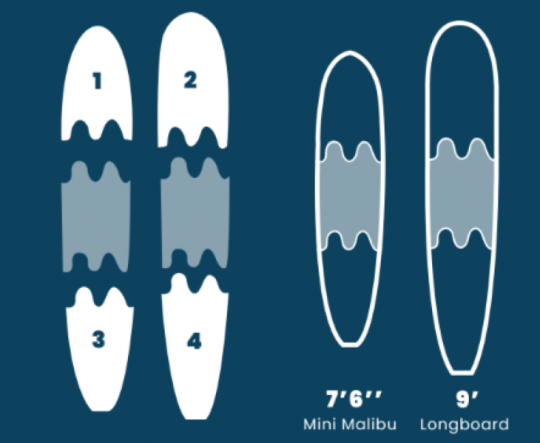

How do you plan to raise public awareness of the idea of demountable surfboards, and what are your future plans for Newave?
To raise public awareness, we'll simply show them how a product that can be disassembled and carried in a backpack can simplify their lives. No more bans on trains, buses, extra charges on planes, or cancelled carpools.
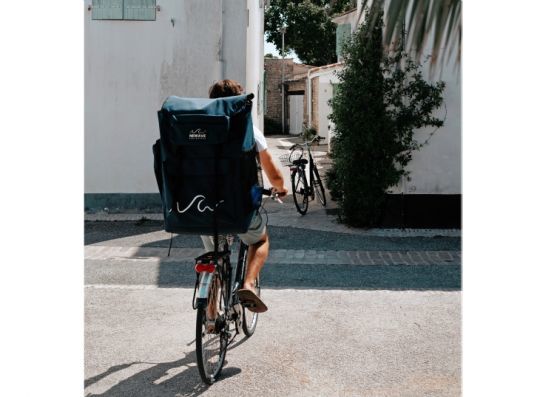
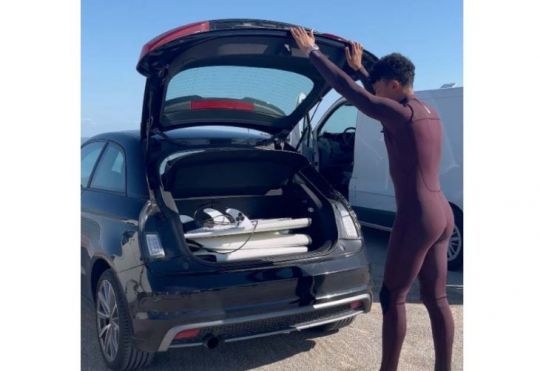
We'll also be demonstrating the performance of the board we're developing. Through tests, customer feedback and numerous events, we'll demonstrate that our product can be used just like a conventional board.
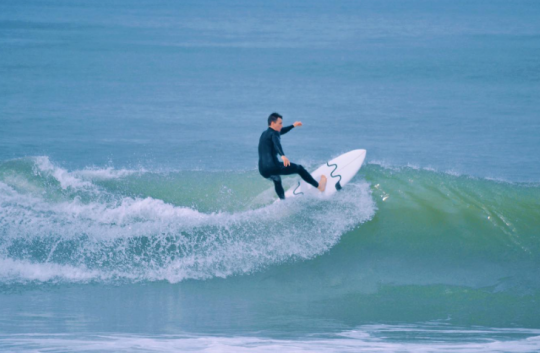
We intend to rapidly develop a range of foam surfboards, a shorter shortboard in two pieces, a paddle, and a wingfoil board. Thereafter, we'll assess demand and opportunities to develop our business.
Pre-orders are open until December 25, 2023. The boards are available on the Newave Surfboards website and in a series of partner stores in France and abroad.

 /
/ 